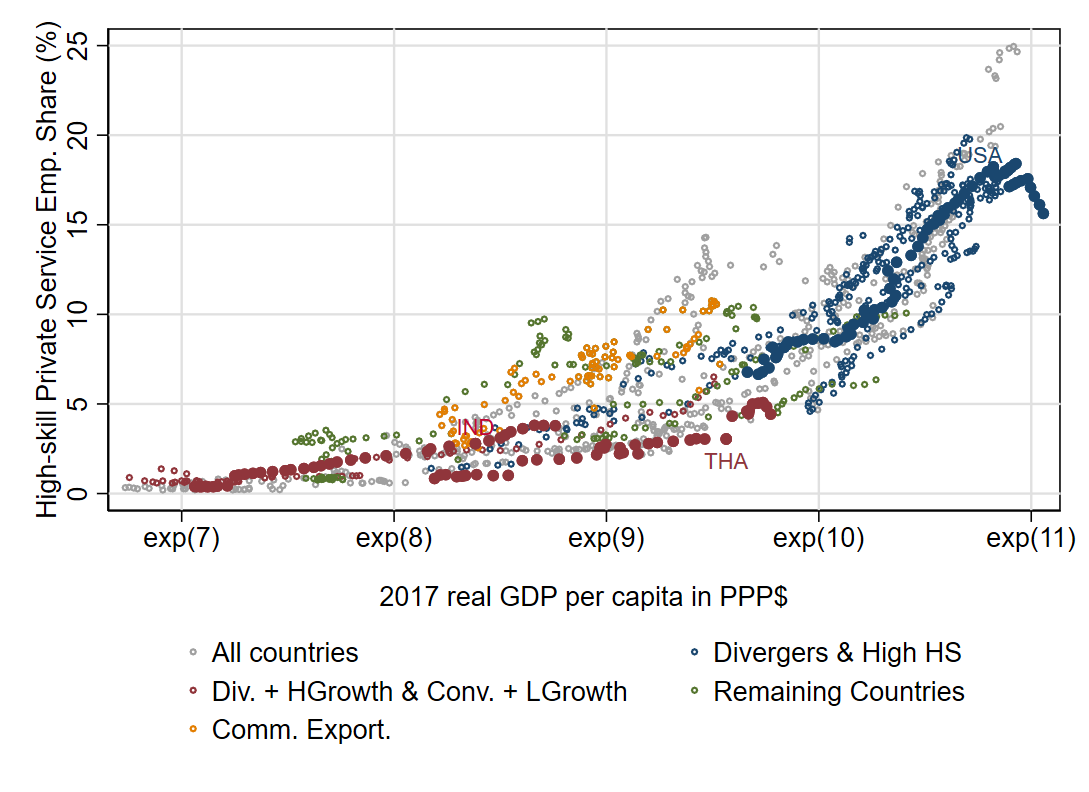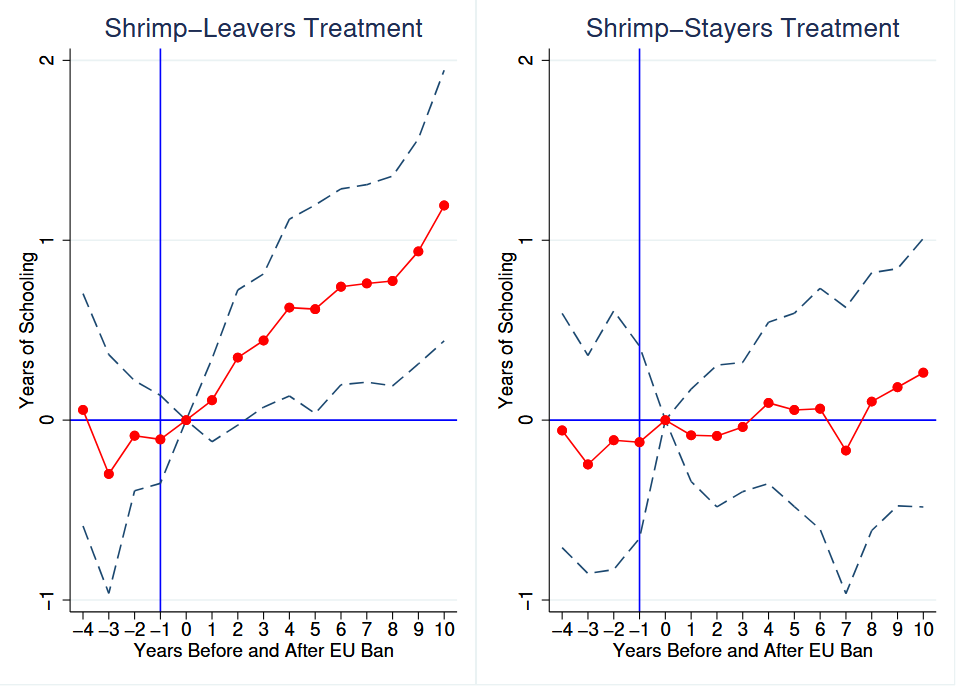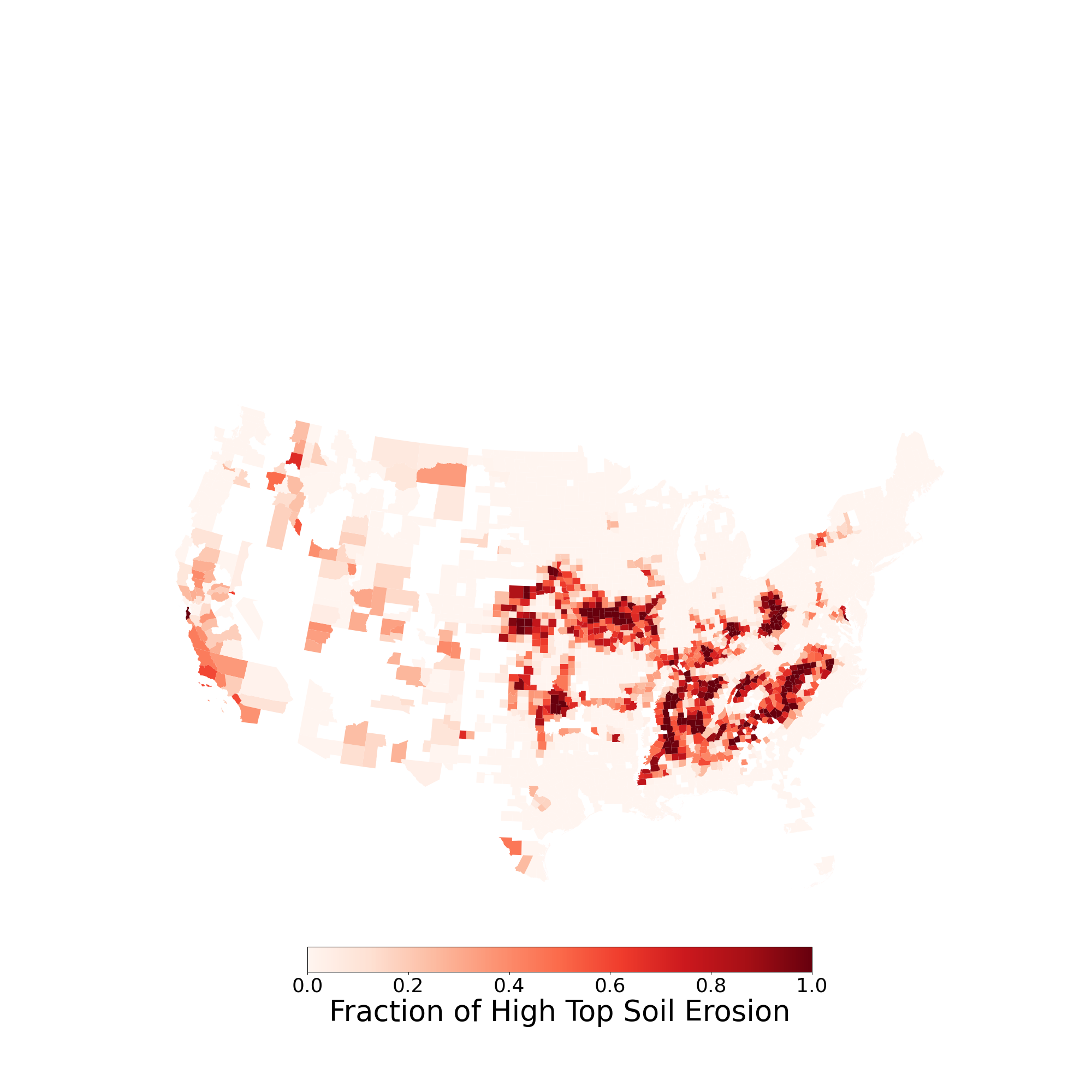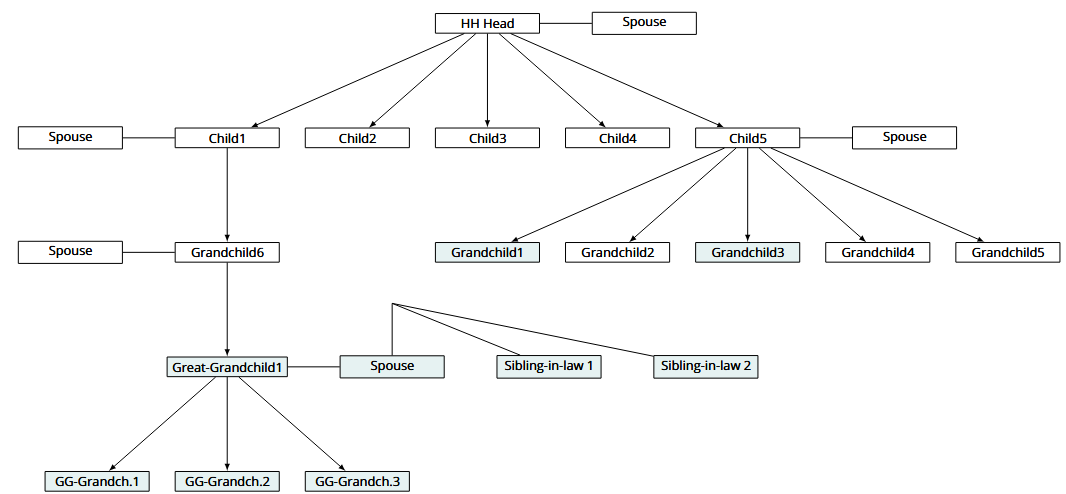Working Papers

Unequal Global Convergence
(Draft)(joint with Shoumitro Chatterjee, Elisa Giannone, Tatjana Kleineberg, Kan Kuno)
Abstract: We revisit a classical question: what is the role of structural transformation in determining regional convergence? To do so, we construct a novel global dataset of regional GDPs and granular sectoral employment for more than 1500 regions and more than 90 countries, which starts in 1980 and covers a large range of income spectrum. We document three main facts. First, regional convergence within countries decreases over time around the globe and stalls in the most recent decade despite residual spatial inequality. Second, this decline in regional convergence is associated with structural transformation toward high-skill services. Third, high-skill service employment exhibits a higher regional concentration than other sectors, including other services, manufacturing, or agriculture. Through the lens of a spatial equilibrium model which embeds the standard drivers of structural change, we find a reinforcing interplay between structural change and spatial development. As an economy transforms toward high-skill services, regional convergence declines due to agglomeration effects in the high-skill service sector. Agglomeration effects increase economic growth which further accelerates structural change toward services and, in turn, widens unequal regional dynamics.

The Intergenerational Benefits of a Temporary Negative Shock: Evidence from Import Restrictions in Thailand
(New draft coming soon)(joint with Chanont Banternghansa, Elisa Giannone)
Abstract: We exploit a small, transitory and sector-specific shock in Thailand and find that it has large, heterogeneous and long-lasting effects by inducing permanent sectoral reallocation. We also provide evidence of causal spillover effects to the rest of the economy. Such temporary and negative demand shock pushes out permanently the worst sorted and less wealthy workers in a sector, turning into a “gift” to the stayers, who gain larger income and market power after the shock. By looking at the education outcomes, however, we find that the shock is a “gift” to the education of the young in the leavers’ family but not for the young in the stayers’ families. Combining the EU ban on black tiger shrimps with detailed household data from the Townsend Thai Project, we investigate the resource reallocation within and across sectors, changes in sectoral productivity and welfare within Thailand. We find that: 1) shrimp farmers experience a loss of income of $10,500 or 50% of their pre-ban income level; 2) their income recover after 5-6 years to pre-ban levels; 3) shrimp farmers are more likely to transition to other sectors even after 10 years; 4) they accumulate assets in new sectors; 5) there are significant spillover effects on local income and sectoral reallocation for non-shrimp farmers; 6) stayers in the sector “gain” in the long-term income but young members of households that left the shrimp sector “gain” in education creating motive for intergenerational mobility.
Work in Progress

Frictions in Structural Change: Evidence from the Dust Bowl
(Draft coming soon)Abstract: This paper examines how micro-level frictions shape structural transformation in the United States during the early twentieth century. Using the Dust Bowl (1931-1940) as a natural experiment, I study how a large negative productivity shock affected migration, education, and occupational choices across generations. Preliminary evidence suggests that children responded more strongly than adults, pointing to barriers that constrained older cohorts. To investigate the origins of such frictions, I combine linked census data with variation in access to destinations through family networks and in occupational entry opportunities within families. These patterns indicate that both migration and occupational barriers slowed the reallocation of labor out of agriculture. I develop a spatial overlapping-generations model with migration, education, and sectoral choice to interpret the evidence and to quantify the role of frictions in shaping the pace of structural transformation in the presence of shocks.

Ties that Bind: Family Networks and Internal Migration
(Draft coming soon)Abstract: This paper studies the role of kinship networks in shaping migration decisions and the pace of geographic adjustment to economic shocks. Despite large returns to moving, migration has often been limited, suggesting the presence of strong frictions. While existing work highlights the importance of networks, empirical measures typically proxy for group attachment rather than direct family ties. I address this gap by constructing a new, nationwide, individual-level panel of extended family networks using linked U.S. census data from 1850 to 1940. These data permit the comprehensive measurement of multigenerational kinship ties and their evolution across space. I show that the presence and composition of family networks strongly influence both the decision to migrate and the choice of destination. To interpret these findings, I develop a spatial general equilibrium model in which kinship networks provide both amenities and insurance, quantifying their effects on migration costs and policy trade-offs.